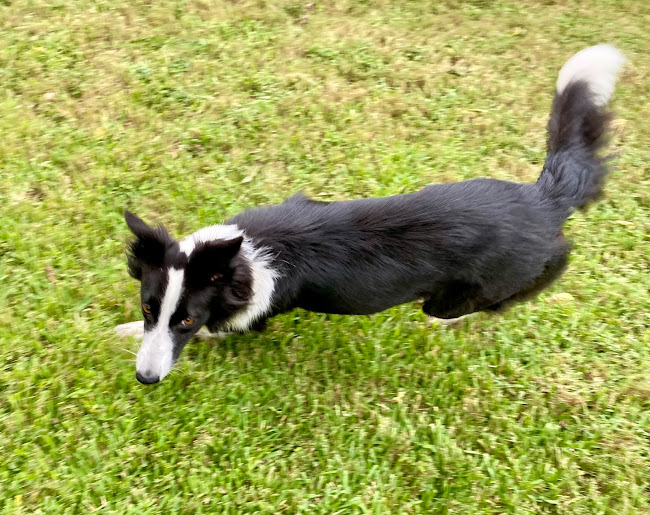When schooling the halt, do not correct the halt if the horse fidgets or is a bit tense; don't move just be quiet. Rather wait for the halt to settle, even if for just one beat, then walk on again. For Jazzy, Conrad suggested it is okay to ride him a bit shorter in the neck even during the warm up phase. To encourage relaxation, school several halt, walk, halt transitions, waiting for Jazzy to settle in the halt. After you start the trot, do trot, walk, halt transitions with your seat wide and heels down, and do walk, trot transitions from the halt.
A warm up excercise in trot is to ride a three loop serpentine, making a ten meter circle each time you come to the wall. After the serpentine, go down centerline and make a ten meter circle figure of eight left then right near G (or D), coming to a halt again at the end on the centerline. When bending be sure to keep your inside leg down and carry your inside hand a little higher to ensure that the horse keeps the flexion. As necessary walk on and halt again, remembering not to correct anything, rather allow him to settle in the halt then walk on again. To reward him, soften your shoulders (rather than petting him).
When cantering a twenty meter circle, keep him in shoulder fore on the circle. In the walk to canter transition, follow the horse's motion with your hips. To get a purchase on the outside hind you can think baby travers (haunches in). Conrad commented on the good quality of Jazzy's canter, saying it is a very pretty canter.
Ten meter circles in canter are an exercise to improve bend. If you have a not so perfect walk to canter transition, do not imeediately go back to walk to do it again, rather stay in canter and make the canter better again before going back to the walk and reschooling the walk to canter.
Another canter exercise is to ride a ten meter circle right from the centerline near L (or I), then go on the diagonal and stay in right counter canter through the short side, then do another ten meter circle right near I (or L), then again make a counter canter half twenty metre circle through the short side. Then ride the diagonal back to true right canter followed by a walk transition.
When schooling medium trot on a twenty meter circle left, be sure to guard the outside (right) hindleg. Conrad commented on how beautiful Jazzy's medium trot was. At this point in the ride, Jazzy was allowed to stretch onto a twenty meter circle in trot, holding the rhythm while staying in self carriage.
This is how to increase reliability: if the horse does something you don't like, just keep going, riding correctly, and make an improvement a little later in motion. Always ride with the outside leg, so that the connexion will be correct. Use the rider's outside leg to hold the horse round in the connexion; have the outside leg in a guarding position. It is very important that when you are riding the inside leg to the outside rein, you are also riding the outside leg which is guarding, as well as you can say a guarding outside rein. The principle is you bring the horse to the outside, not that you're holding the outside tight, rather bring the horse to the outside rein in a soft way. And when you have brought the horse to the outside, then the neck gets stable and gets soft and stays round.
While test riding: In the renvers, allow the outside shoulder to allow the bend. In the extended walk, the rider should remember to move the hips with the motion of the horse, and keep the contact so that the neck does not get too long; a slightly shorter neck will help you later in the next transition. Allow in the right rein in the counter canter.
To improve the walk, ride the walk through the neck. Do not be stiff, rather follow the horse with your hips. When the walk to canter transitions improve, the walk will improve with it.
Jazzy having a chat with Conrad:















